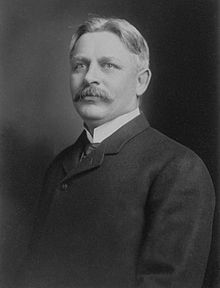필립 홀리거
Philipp Holliger이 글은 인용 문체가 불분명하다 2021년 7월 (이를 에 대해 합니다) |
필립 홀리거 | |
|---|---|
 | |
| 태어난 | 필립 홀리거 |
| 모교 | ETH 취리히, MRC 단백질 엔지니어링 센터(PhD) |
| 과학 경력 | |
| 필드 | 분자생물학, 합성생물학, 이종생물학 |
| 기관 | MRC 분자생물학연구소 단백질공학센터 |
| 논문 | 대장균의 다가 및 이특이적 항체 조각 (1994) |
| 박사 어드바이저 | 그레고리 윈터 경, 팀 리치몬드 교수 |
| 웹 사이트 | https://www2.mrc-lmb.cam.ac.uk/group-leaders/h-to-m/philipp-holliger/ |
Ph.D. Philipp Holiger는 XNA와 [1]RNA [2][3]공학에 관한 연구로 가장 잘 알려진 스위스 분자생물학자이다.Holliger는 MRC Laboratory of Molecular Biology(MRC LMB)[4]의 프로그램 리더입니다.
배경
그는 자연과학 학위를 취득했다.나트위스.ETH)는 스위스 ETH 취리히에서 Steven Benner와 함께 연구했으며, Gregory Winter 경(CPE 및 MRC LMB)과 Richmond([5][6]ETH)의 지도 아래 케임브리지 MRC Center for Protein Engineering(CPE)에서 분자생물학 박사 학위를 취득했다.
겨울 실험실에 있는 동안, Holiger는 디아보디라고 불리는 새로운 유형의 이특이적 항체 단편을 개발했고 필라멘트 박테리오파지의 [7][8]감염 경로를 해명하는 작업을 했다.
MRC LMB에서 독립 그룹 리더가 된 후, Holiger는 연구의 초점을 합성 생물학으로 옮겼고, 그곳에서 유제-PCR과 시험관 내 [9]진화를 위한 방법을 개발했습니다.Halliger는 [10]2015년에 EMBO의 회원으로 선출되었다.
조사.
XNA
핵산 화학을 그가 개발한 시험관내 진화 방법과 결합함으로써, Holiger와 동료들은 완전히 부자연스러운 백본(XNAs)을 가진 합성 유전자 중합체의 합성과 역전사를 위해 복제 DNA 중합효소를 재프로그래밍할 수 있었다.이것은 DNA에 대한 합성 대체물이 DNA처럼 [1][11]유전 정보를 저장할 수 있다는 것을 처음으로 보여주었다.
Holiger 연구소에 의한 추가 연구는 XNA 리간드(aptamers)[1]와 XNA 촉매의 시험관 내 진화를 가능하게 했으며, XNA 나노[12] 구조의 [13]정교함뿐만 아니라 XNA라 불리는 RNA 효소(리보자임으로 알려져 있음)와 유사한 XNA 촉매의 진화를 가능하게 했다.XNA 분자의 부자연스러운 골격 화학은 새롭고 유용한 특성을 보인다.예를 들어, 천연 핵산과 달리, 일부 XNA는 인체에 의해 쉽게 분해되지 않거나 화학적으로 훨씬 더 안정적이다.최근 Holiger는 또한 충전되지 않은 백본을 가진 XNA의 합성과 진화에 대해 설명했는데, 이는 충전된 [14]백본이 없는 경우에도 이전의 제안과는 대조적으로 유전적인 기능(즉, 유전과 진화)이 가능하다는 것을 보여준다.
생명의 기원
Halliger는 또한 생명의 [2][3]기원에 대한 초기 단계를 더 잘 이해하는 데 기여했습니다.RNA 세계 가설이라고 불리는 한 시나리오는 생명체의 기원에 있어 중요한 사건이 자기 복제와 진화를 할 수 있는 RNA 분자의 출현이었고, 주요 구성 요소로서 RNA에 의존하는 원시 생물학을 만들었다는 것을 암시한다.이전에 발견된 RNA 중합효소 활성을 가진 리보자임을 시작으로, Holiger와 동료들은 처음에 다른[15] 리보자임과 후속적으로 [16]자신보다 긴 RNA 배열을 합성할 수 있는 RNA 중합효소 리보자임을 개발하였다.보다 최근에, 그는 뉴클레오티드 세쌍둥이를 사용하여 자신의 일부를 포함한 고도로 구조화된 RNA[17] 템플릿을 복제할 수 있는 최초의 중합효소 리보자임을 설명했습니다.
이 연구 과정에서, Holiger는 초기 지구에 널리 퍼졌을 가능성이 있는 단순한 매체인 물 얼음의 특성을 탐색했고, 그것이 RNA 중합효소 리보자임의[16] 활동, 안정성, 그리고 진화를 촉진하고 다양한 RNA 배열 풀의 재결합 능력을 증가시킨다는 것을 발견했습니다.[18]그는 또한 동결 토우 사이클로 인한 급격한 농도 및 온도 구배를 이용하여 리보자임 조립과 접힘을 구동할 수 있으며, 이는 현대 [19]생물학의 샤페론처럼 작용한다는 것을 발견했습니다.
레퍼런스
- ^ a b c Pinheiro, Vitor B.; Taylor, Alexander I.; Cozens, Christopher; Abramov, Mikhail; Renders, Marleen; Zhang, Su; Chaput, John C.; Wengel, Jesper; Peak-Chew, Sew-Yeu; McLaughlin, Stephen H.; Herdewijn, Piet; Holliger, Philipp (20 April 2012). "Synthetic Genetic Polymers Capable of Heredity and Evolution". Science. 336 (6079): 341–344. Bibcode:2012Sci...336..341P. doi:10.1126/science.1217622. ISSN 0036-8075. PMC 3362463. PMID 22517858.
- ^ a b Wochner, Aniela; Attwater, James; Coulson, Alan; Holliger, Philipp (2011-04-08). "Ribozyme-Catalyzed Transcription of an Active Ribozyme". Science. 332 (6026): 209–212. Bibcode:2011Sci...332..209W. doi:10.1126/science.1200752. ISSN 0036-8075. PMID 21474753. S2CID 39990861.
- ^ a b Geddes, Linda. "Earth's first life may have sprung up in ice". New Scientist. Retrieved 2021-05-16.
- ^ "MRC Laboratory of Molecular Biology group leader profiles". LMB Website.
- ^ "Phil Holliger - Biography". Holliger Lab Website.
- ^ Holliger, Philipp (1994). Multivalent and bispecific antibody fragments from E.coli: new strategies for antibody-based diagnostics and therapeutics from bacteria. ETH Zurich (Thesis). doi:10.3929/ethz-a-001469985. hdl:20.500.11850/142158.
- ^ Holliger, P.; Prospero, T.; Winter, G. (15 July 1993). ""Diabodies": small bivalent and bispecific antibody fragments". Proceedings of the National Academy of Sciences of the United States of America. 90 (14): 6444–6448. Bibcode:1993PNAS...90.6444H. doi:10.1073/pnas.90.14.6444. ISSN 0027-8424. PMC 46948. PMID 8341653.
- ^ Holliger, P.; Riechmann, L. (15 February 1997). "A conserved infection pathway for filamentous bacteriophages is suggested by the structure of the membrane penetration domain of the minor coat protein g3p from phage fd". Structure. 5 (2): 265–275. doi:10.1016/s0969-2126(97)00184-6. ISSN 0969-2126. PMID 9032075.
- ^ Ghadessy, F. J.; Ong, J. L.; Holliger, P. (2001-03-27). "Directed evolution of polymerase function by compartmentalized self-replication". Proceedings of the National Academy of Sciences. 98 (8): 4552–4557. Bibcode:2001PNAS...98.4552G. doi:10.1073/pnas.071052198. ISSN 0027-8424. PMC 31872. PMID 11274352.
- ^ "Find people in the EMBO Communities". people.embo.org. Retrieved 2020-09-15.
- ^ "Synthetic XNA molecules can evolve and store genetic information, just like DNA". Discover Magazine. Retrieved 2021-05-16.
- ^ Coghlan, Andy. "Synthetic enzymes hint at life without DNA or RNA". New Scientist.
- ^ Barras, Colin. "Artificial DNA folds into parcels that can survive inside us". New Scientist.
- ^ Arangundy-Franklin, Sebastian; Taylor, Alexander I.; Porebski, Benjamin T.; Genna, Vito; Peak-Chew, Sew; Vaisman, Alexandra; Woodgate, Roger; Orozco, Modesto; Holliger, Philipp (June 2019). "A synthetic genetic polymer with an uncharged backbone chemistry based on alkyl phosphonate nucleic acids". Nature Chemistry. 11 (6): 533–542. Bibcode:2019NatCh..11..533A. doi:10.1038/s41557-019-0255-4. ISSN 1755-4349. PMC 6542681. PMID 31011171.
- ^ Wochner, Aniela; Attwater, James; Coulson, Alan; Holliger, Philipp (8 April 2011). "Ribozyme-Catalyzed Transcription of an Active Ribozyme". Science. 332 (6026): 209–212. Bibcode:2011Sci...332..209W. doi:10.1126/science.1200752. ISSN 0036-8075. PMID 21474753. S2CID 39990861.
- ^ a b Attwater, James; Wochner, Aniela; Holliger, Philipp (December 2013). "In-ice evolution of RNA polymerase ribozyme activity". Nature Chemistry. 5 (12): 1011–1018. Bibcode:2013NatCh...5.1011A. doi:10.1038/nchem.1781. ISSN 1755-4349. PMC 3920166. PMID 24256864.
- ^ Attwater, James; Raguram, Aditya; Morgunov, Alexey S; Gianni, Edoardo; Holliger, Philipp (15 May 2018). "Ribozyme-catalysed RNA synthesis using triplet building blocks". eLife. 7: e35255. doi:10.7554/eLife.35255. ISSN 2050-084X. PMC 6003772. PMID 29759114. S2CID 46889517.
- ^ Mutschler, Hannes; Taylor, Alexander I; Porebski, Benjamin T; Lightowlers, Alice; Houlihan, Gillian; Abramov, Mikhail; Herdewijn, Piet; Holliger, Philipp (2018-11-21). Weigel, Detlef; Muller, Ulrich (eds.). "Random-sequence genetic oligomer pools display an innate potential for ligation and recombination". eLife. 7: e43022. doi:10.7554/eLife.43022. ISSN 2050-084X. PMC 6289569. PMID 30461419.
- ^ Mutschler, Hannes; Wochner, Aniela; Holliger, Philipp (June 2015). "Freeze–thaw cycles as drivers of complex ribozyme assembly". Nature Chemistry. 7 (6): 502–508. Bibcode:2015NatCh...7..502M. doi:10.1038/nchem.2251. ISSN 1755-4349. PMC 4495579. PMID 25991529.


